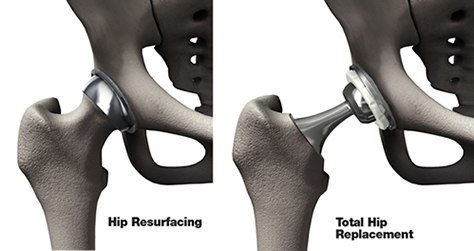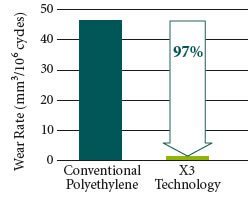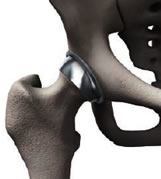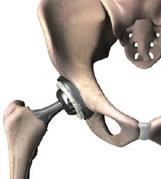Hip Replacement Options
Which Hip Replacement Option is Best for Me?

There are a variety of anatomic hip implant options that help match your natural anatomy. New technologies are available today that may improve the longevity of implants and may increase the motion in your hip.
Cormet Hip Resurfacing
Hip resurfacing is a procedure that uses a metal cap over the hip ball and that may conserve more bone than traditional hip replacement procedures. This large diameter cap may reduce the risk of dislocation and often provides a more natural performance than total hip replacement.1 Hip resurfacing is not for everyone; it is more appropriate for active patients with osteoarthritis and good bone quality.

Total Hip Replacement
For Improved Motion
Larger femoral heads are designed to allow for more motion and enhanced joint stability than smaller femoral heads. Stryker’s anatomic femoral heads are larger in size, similar to the top of your femur, so they are designed for natural hip performance.
For Reduced Wear
Advanced bearing materials have demonstrated significant wear reduction in laboratory testing. 2,3 Technologies such as ceramic-on-ceramic and X3® polyethylene are designed to reduce wear. This decrease in wear may extend the life of your hip implant.

Total Hip Replacement vs. Cormet Hip Resurfacing
Hip resurfacing is most appropriate for active patients with:
- Good bone quality
- Osteoarthritis
When is Total Hip Replacement a Better Choice?
Hip resurfacing is not recommended for patients with the following conditions:
- Active or suspected infection in or about the hip joint;
- Poor bone quality which your surgeon feels could not support the implant;
- Multiple cysts;
- Any known allergy to metal (e.g., jewelry);
- Extreme overweight (overload on device that would lead to failure);
- Skeletal immaturity;
- Women in child-bearing years;
- Weak immune system due to disease or certain medications (e.g., corticosteroids);
- Kidney failure.


